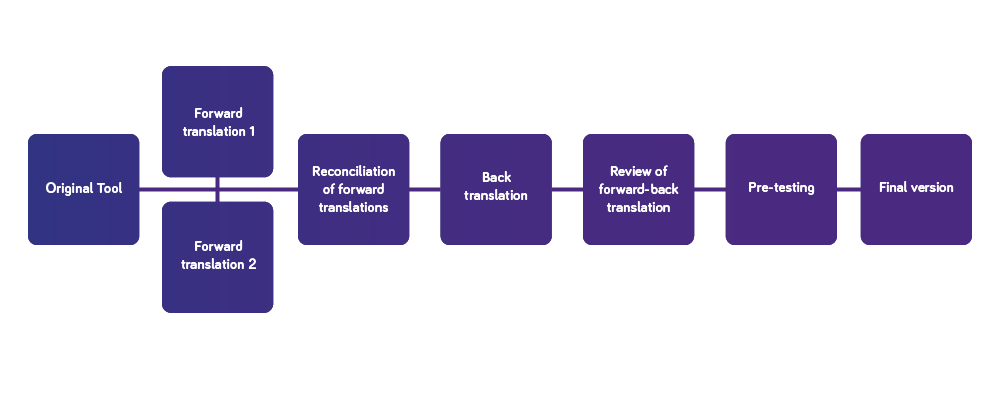Cross-cultural adaptation of the Feeding and Nutrition Screening Tool
The final validation of the Feeding and Nutrition Screening Tool for children with Cerebral Palsy (herein described as ‘FNST’), was conducted (as an English tool) on n=89 children with cerebral palsy (mean age=6;11 years, Gross Motor Function Classification System levels I-V) in Queensland, Australia1 This resulted in four items with a maximum score of 4.
The psychometric properties of the tool are therefore based on a predominately urban Australian English-speaking sample. As such, a formalised & rigorous process of cross-cultural adaptation was necessary to translate the tool for different populations, including adaptation of the concepts to ensure item equivalence of translations.
A guideline was therefore developed to guide the linguistic and/or cultural adaptation of the FNST for use in non-English speaking countries/ regions. The specific process selected for the adaptation of the FNST is described in detail in the Feeding and Nutrition Screening Tool for Children with Cerebral Palsy: Cross-Cultural Adaptation Guidelines (available on request: zoe.van-zyl@danone.com / k.bell@uq.edu.au).
Figure 1 shows an overview of the cross-cultural adaptation process from the original tool to the adapted version.

Copyright,
Any adapted versions of the Feeding and Nutrition Screening Tool must (1) acknowledge the original publication and (2) not be for commercial purposes. By participating in the process outlined in this document you are agreeing to the translated versions being available for download free of cost on the Nutricia website or another website nominated by the developers and Nutricia. The organisation responsible for conducting the adaptation may also provide a copy of the adapted tool on their website with appropriate acknowledgements











